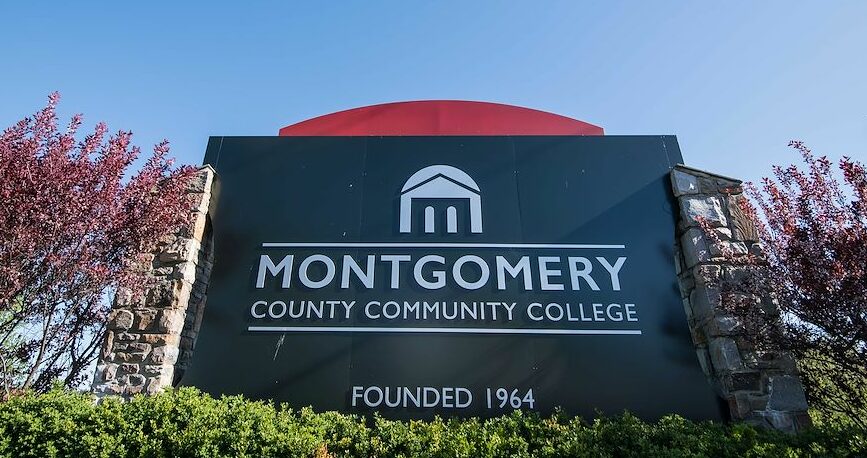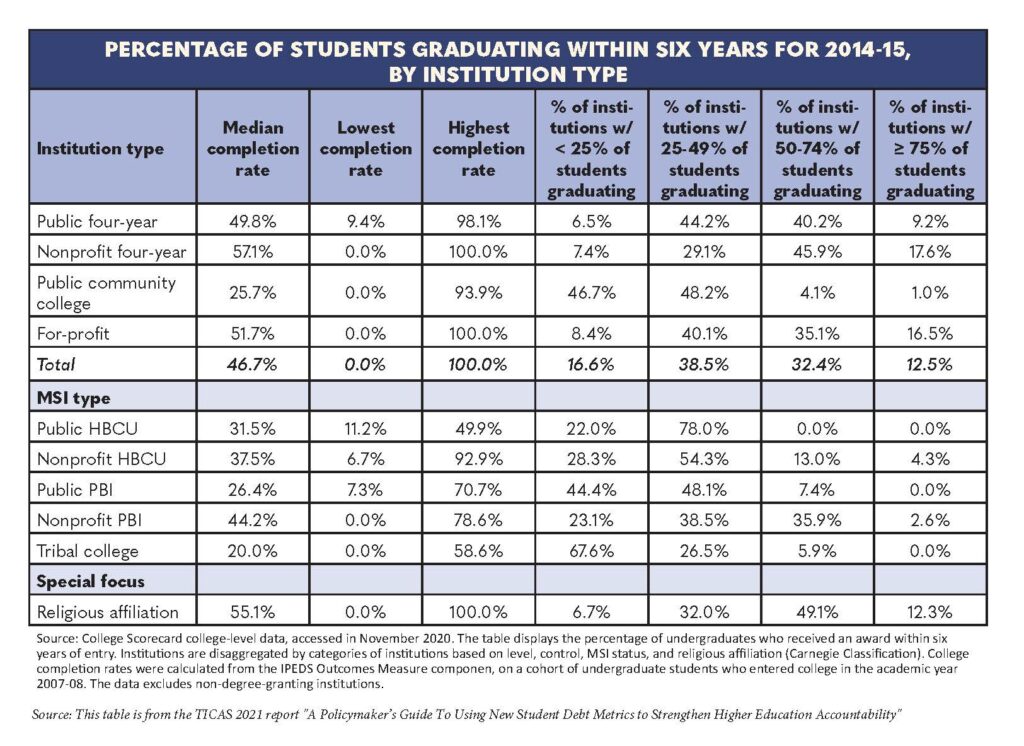When U.S. Secretary of Education Miguel Cardona came to the Delaware Valley earlier this month to tout President Joe Biden’s $109 billion plan for free community college, he stopped to visit Montgomery County Community College.
“What I saw here today, not only from the students but just the way it’s designed to be successful,” Cardona said, “this is a gem.”
What America’s top education official didn’t mention was MCCC’s graduation rate: 25 percent. And that’s for students after three years for a two-year program. The rate of on-time graduation is just 12 percent.
Cardona toured the Blue Bell campus with U.S. Rep. Madeleine Dean (D-Montgomery), who said her focus is on “equity.”
“It will bring equity to education, which is something that frustrates me as a parent, and as a former professor of 10 years,” Dean said of Biden’s community-college spending binge. “You could see that some people just didn’t have a shot because of the expense, because of the access and other things.”
The MCCC graduation rate for African American students is 11 percent.
This, say critics of the Biden plan, is the fatal flaw of pouring billions of new funding into the nation’s community college system. According to data from The Institute for College Access and Success (TICAS), the median completion rate for community college — students getting their degree or certificate within six years of enrollment — is just 25.7 percent.
That’s half the rate of four-year state universities (49.8 percent) and “for-profit” or career colleges (51.7 percent).
“Before the feds invest this money in community colleges, we need to change the mindset,” says Ray Domanico, senior fellow and director of education policy at the Manhattan Institute. “We need to change the incentives. Right now, the schools get the revenue regardless of the outcomes.”
Pennsylvania community colleges rank 33 in a national ranking of 41 state community college systems by the data analysts at WalletHub. In its ranking of 13 out of Pennsylvania’s 15 community colleges, Bucks County was listed as the best and Allegheny County the worst.
The national ranking of community college systems included 685 schools from member institutions in the American Association of Community Colleges. “Due to data limitations, we were unable to include all member schools. This is why some colleges are missing from the ranking,” Diana Polk, communications manager at WalletHub, told Delaware Valley Journal.
“The ranking system was based on 19 metrics grouped in three key dimensions: Cost and financing, education outcomes, and career outcomes. Some of the most important metrics included the cost of in-state tuition, the availability of free community college education, retention rates, graduation rates, but also the median salary after attending,” said Jill Gonzalez, a WalletHub analyst.
Based on the WalletHub rankings of individual community colleges in the U.S., only two Pennsylvania colleges ranked in the top half — Bucks County and Butler County. “There is clearly a lot to be improved in terms of community college education in the state,” according to Gonzalez.
Some schools dispute the relevance of the rankings.
“I find the methodology used to compile this list extremely problematic, given that some of the metrics being measured do not equate to the category being assessed and/or are outside the industry standard,” said Elizabeth Johnston, executive director of public relations and marketing at the Community College of Allegheny County.
However, the “completion rate” data (the phrase used by education professionals) is not in question.
Defenders of the community college system argue measuring their performance by “completion rates” is unfair. They note the schools cater to non-traditional students, many of whom use college classes differently than typical students attending a four-year school.
“There are people who are looking to get what I call ‘new-collar jobs’ like computer coding, hospitality, things like that. And because our k-12 schools don’t teach these skills, they push it onto the community colleges,” said Michael T. Miller, professor of higher education at the University of Arkansas. “Other students want to get some courses out of the way before they transfer to four-year schools. So you get people who enroll in the local community college, they take two classes — like the hard chemistry class or the language classes — then transfer out. And then that community college is showing a failed student or somebody who drops out.”
Nonsense, says Dr. Jason Altmirme, president and CEO of Career Education Colleges and Universities (CECU) and a former Democratic member of Congress.
“Completion rates are completion rates. If you’re an education policymaker, the facts are what they are. And the facts are our sector’s graduation rates are double those of community colleges.”
Altmire notes the Biden administration’s education policy, like that of the Obama administration, is openly hostile to privately-operated career colleges and often uses completion rate data to push regulations on the industry. The source of the completion-rate data above — TICAS — was co-founded by Robert Shireman, an anti-career college activist and veteran of the Obama education department.
Shireman, a longtime advocate of free college who left the Obama administration “under an ethical cloud,” according to a watchdog organization, is now helping the Biden administration craft higher ed regulations. Critics note those regulations would favor community colleges regardless of the schools’ performance and ignore successes in the career-college sector.
“We do not support proposals that arbitrarily pick and choose winners amongst different sectors of higher education,” says Aaron Shenck, executive director of the Pennsylvania Association of Private School Administrators. “Unilateral funding proposals discriminate against students who decide to attend other institutions that often have better student outcomes than the government-subsidized alternative.”
The performance of Pennsylvania’s community colleges raises serious questions about Biden’s $109 billion “free college” plan.
Reporter Maria Marabito contributed to this report.


